|
 Secure Site
Secure Site
|
 |
Archive for the 'nature' Category
 How to Create a Stress-Free Life Kathleen Hall is one of the nation’s noted experts on stress management — she’s consoled Katrina survivors, counseled victims of domestic abuse, and advised families in hospitals coping with cancer and AIDS. But she didn’t always hold this title.
More than 20 years ago, Hall was a successful stockbroker on Wall Street, with a supportive husband and two healthy children. But the late nights, high-stakes pressure, and stressful commute wore at her over the years, until one day she snapped. She quit her job, retreated for six months to a remote cabin in Clarksville, Georgia, and spent the next seven years pursuing degrees in divinity and spirituality.
On her journey to a stress-free life, here’s what she learned.
Hall adopted a powerful but surprisingly simple mantra — SELF, an acronym for serenity, exercise, love, and food — and started teaching it to others to great effect. These “four roots of real happiness” may seem almost too easy, but she insists they have a centering effect in even the worst of circumstances.
Making time for serenity creates space in our lives for meditation and stress reduction; exercise benefits the spirit and mind as well as the body; love and friendship bring physiological and emotional rewards; and nourishing food, consciously consumed, feeds the senses in a deeply satisfying way.
It’s these simple things that keep us balanced, she says, and they make up Hall’s 10 secrets to a stress-free life.
One of the ultimate Zen like experiences is waking-up from a great slumber refreshed and energized. Your mind and body are harmoniously one, both alert and focused. Having a refreshed mind and body are two keys to a natural and Zen lifestyle. Waking up in the morning should not be a loud and abrupt awakening, but rather it should be a peaceful positive experience. The right natural alarm clock can transition your deep and tranquil sleep into a serene start to consciousness. Imagine a long-resonating Tibetan bell-like chime waking you up to a beautiful morning experience.
The right alarm clock can be the most beneficial investment for you. With our Now & Zen natural alarm clock you are awakened more gradually and thus more naturally. Now & Zen is focused on creating a naturalistic lifestyle, and our clocks are an example of our philosophy.
adapted from Body + Soul Magazine
 Natural Sounding Alarm Clocks and Meditation Timers, The Digital Zen Alarm Clock in Solid Walnut Now & Zen – The Zen Alarm Clock Store
1638 Pearl Street
Boulder, CO 80302
(800) 779-6383
Posted in Beauty, Chime Alarm Clocks, intention, Meditation Timers, Meditation Tools, Natural Awakening, nature, wake up alarm clock, Well-being
 wake up naturally I recently taught my students about chronobiology—the study of cycles in organisms. We talked about the importance of a good night’s sleep, which is greatly aided by allowing sunlight and moonlight to synchronize our internal cycles. This means gradually awakening to morning sunlight and allowing our bodies to relax before bedtime by avoiding bright light.
Taylor had been troubled by insomnia. After this class, she was ready for a change. A few hours before bedtime, she turned off bright lights around the house and wrapped up her computer use for the day (the light from a monitor can throw off your biological clock). An hour before bedtime, she lit candles and turned off all electric lights. By candlelight, she bathed, got into her night clothes and meditated before falling into a deep, peaceful sleep. In the morning, she was awakened by the gradually increasing sunlight and her chime alarm clock with progressively increasing natural acoustic sound by Now & Zen. She came to class glowing with refreshment and a new sense of empowerment. Now Taylor understands that her body needs a relationship with natural cycles of light and dark. “I’m not nearly as groggy as I used to be,” she says. “Light really is stimulating!”
adapted from Natural Home Magazine, September/October 2009 by Carol Venolia
If you don’t have the luxury to gently wake up to by light — try the next best alternative…waking gently to soothing chimes. Out Soothing Digital Chime Clock’s long-resonating Tibetan bell-like chime makes waking up a beautiful experience – its progressive chimes begin your day with grace.
Carol Venolia is an eco-architect and co-author of Natural Remodeling for the Not-So-Green House (Lark Books, 2006). She teaches in the Sustainable Communities program at Dominican University of California.
 Gentle Chime Clock to help you Naturally Wake-Up Now & Zen’s Natural Chime Alarm Clock Store
1638 Pearl Street
Boulder, CO 80302
(800) 779-6383
Posted in Chime Alarm Clocks, Natural Awakening, nature, Progressive Awakening, sleep, Sleep Habits, wake up alarm clock, Well-being
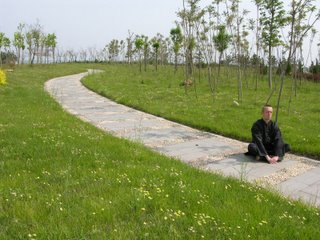 downtime I’m not great with downtime. In line at the post office, I whip out my cell phone and delete old text messages. When I’m stopped at a light, I retrieve a cloth from the glove compartment and dust the dashboard.
At home, I try to snuggle with my pug and relax, but I can’t. I get up to unload the dishwasher, check my e-mail, sort socks, or get a jump on tomorrow’s research and writing. Clearly, I feel better ticking items off my to-do list. The question is: Would I be better off just letting my mind drift?
Truth is, the urge to occupy idle time is tough to fight. We’re a nation of doers, after all: bustling workaholics who have a hard time sitting still (unless it’s in front of the TV). As much as we try to crowd it out, however, experts tell us that boredom is an essential part of the human experience. It’s a counterbalance to all that busyness. In fact, some argue it’s a gateway to peace.
“Create space in your life,” says Body+Soul life coach Cheryl Richardson, “and you’ll find serenity and inspiration on the other side.”
If a little thumb-twiddling can truly lead to better things, why do many of us so desperately avoid it? To demystify our aversion to idleness, we asked Richardson and psychotherapist Richard Winter, M.D., to explain what’s fueling our discomfort with those frightfully unscheduled moments. Here, they share the top three reasons we’re so down on downtime, as well as offer up ways to embrace it — and find deeper satisfaction in the everyday.
We’re Overstimulated
Remember when the doctor’s waiting room was just that — a place to sit, with nothing to do but wait? Now, with TV screens popping up in medical offices, taxicabs, elevators, and even the checkout line (not to mention the lure of your cell phone, iPod, and BlackBerry), every spare moment provides another opportunity for stimulation. As a result, the empty pockets of time we once took for granted have vanished.
 schedule downtime The problem with overstimulation, says Winter, author of “Still Bored in a Culture of Entertainment,” is it creates a “psychological callus” that hardens over time and can eventually keep us from responding with depth to anything or anyone. “Because we can’t discriminate between so many options, we completely shut down our attention to almost everything.”
That, he argues, essentially leaves us feeling passive and craving temporary relief from boredom. Worse, we end up with no time to reflect on our lives, making it harder to forge meaningful connections with the people around us.
Find joy in the humdrum. Recharge your inner resources by reacquainting yourself with quiet. This can prove surprisingly hard if you’re used to nonstop stimulation, so aim for specific actions. Turn off the TV after a certain time each evening. Drive one way of your commute without listening to NPR.
Better still, take a calming walk three nights a week after dinner — and leave the iPod home. The physical activity will satisfy your need to do something, all while energizing you in a way that watching Law & Order can’t. By welcoming a little idle time and its attendant reflection, says Winter, you’ll soon come to “delight in the ordinary again.”
adapted from Body + Soul October 2008
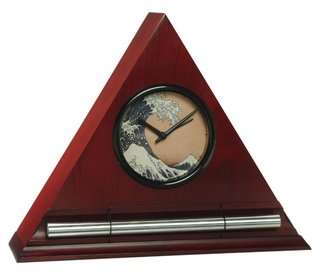 Zen Clock for Timing your downtime with a gentle chime Now & Zen’s Alarm Clock Shop
1638 Pearl Street
Boulder, CO 80302
(800) 779-6383
Posted in intention, Meditation Timers, Meditation Tools, mindfulness practice, nature, Now & Zen Alarm Clocks, Walking Meditation, Well-being, Zen Timepiece by Now & Zen, Zen Timers
 Awareness As a sustainable communities professor at Dominican University of California, I love to give my students strange assignments and then watch them grow. In turn, they’ve taught me much about coming into the right relationship with life.
Modern living involves high levels of sensory input—much of it meaningless or even nasty. So we shut down. Our magnificent equipment—which allowed our ancestors to feel a shift in the breeze, smell ripening fruit, hear every footfall and see subtle color changes—goes into standby mode. But we need our senses to tell us what we crave (birdsong, sunshine, a gurgling stream, ripe fruit) and what we reject (leaf blowers, smog, clutter). Our senses bring us to life.
So at the beginning of class, I ask students to pause. “Close your eyes, take a deep breath and relax. What do you smell? What do you hear—near, far, steady, intermittent? How does the air feel on your skin—dry, moist, moving, still, cold, warm? Now slowly open your eyes, and notice shapes, colors, light, dark, near, far. What appeals to your senses, and what is a turnoff? What are you aware of now that you weren’t before?”
Suddenly, the students are aware of both the unpleasant and the delicious. They dislike the sounds of traffic, ticking clocks, and mechanical heating and cooling systems. And if there is even one green growing thing, one ray of sunshine or one bird singing, they fall in love with it. In fact, if the weather is decent, they ask, “Can we have class outside?”
Where are you?
At the end of class, I send students home with an expanded assignment: At least once a day, stop and notice how the air feels, where the sun is, the wind’s direction, the terrain, vegetation, critters; then write it all down. This exercise has changed a few lives.
Matt, an urban apartment dweller, realized that he’d been tolerating noise levels that caused tension by day and insomnia by night; he moved, and now he feels like a different person.
Cheryl lives in a suburb and takes the bus to work. She recently began walking to a neighborhood bus stop rather than driving to a central stop, partly so she could spend more time outdoors. She became more aware of trees, birds and weather conditions and more familiar with her neighbors. She noticed that birds were more active and vocal when the sky was clear; she noticed when the geese started flying south and missed them when they were gone. Observing the trees, she noticed the wind’s direction. “The peaceful window of time to myself first thing in the morning helps me start my day with more clarity and calmness,” she says. “And walking home at night, I enjoy gazing at the beautiful night sky and the changing moon.”
Josh lives near the ocean. Sensory tune-ins made him more aware of the breeze, and he wanted to play with it. He put up a wind sock and soon noticed that the wind usually came from the northwest. But why? He explored regional wind patterns, and I encouraged him to study storm fronts and cyclonic wind patterns. Then he bought a little weather station to keep track of wind, air temperature and barometric pressure. After I suggested that he also note his physical and emotional feelings, he had an epiphany: His moods were often directly related to weather conditions.
Cheryl and Josh are beginning to grasp that nature is everywhere and that everything affects everything else. This also has a practical application: They are gaining observation skills that will make them good ecological designers, able to create habitations that are powered by natural elements and friendly to the biosphere.
 balancing rocks In a culture that treats our bodies as isolated machines, it’s world-changing to notice our craving for harmony with other natural phenomena—and starting to learn how to satisfy it. Getting outdoors, listening to our bodies, watching birds, tracking breezes and cycling with the sun are enjoyable in themselves, but they lead us to something much larger: an understanding of how the world works. And once we get it, there’s no going back. The insights keep multiplying, and we’re motivated to greater and deeper actions by feeling truly, deeply alive.
As my student Brian says, “When I stop everything and sit as part of it all, I feel the connection rather than intellectualizing interconnectedness.” Because everything is interconnected, we can start our journey anywhere, with deceptively simple steps: stop, look, listen, feel.
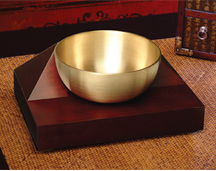 Singing Bowl Meditation Timer from Now & Zen, Inc. - Boulder, CO The Zen Timepiece (with Tibetan- Singing Bowl) serves as a countdown and interval timer for yoga, meditation, bodywork, etc.; and it can also be set to chime on the hour as a tool for “mindfulness.”
adapted from Natural Home Magazine, September/November 2009 by CarolVenolia
Carol Venolia is an eco-architect and co-author of Natural Remodeling for the Not-So-Green House (Lark Books, 2006). She teaches in the Sustainable Communities program at Dominican University of California.
 Chime Meditation Timers and Clocks with Chime in Bamboo, Walnut, Maple, and Black Lacquer Now & Zen’s Meditation Timer & Alarm Clock Shop
1638 Pearl Street
Boulder, CO 80302
(800) 779-6383
Posted in Insomnia, mindfulness practice, Natural Awakening, nature, Well-being
 walking in waves, a mindfulness meditation There is nothing more soul-renewing than a very long, meandering, aimless walk. And I do mean aimless — as in, “I’m heading out! I have no idea how long I’ll be or where I’m going!”
I started walking this way quite by accident, in the midst of recovering from the heartache and confusion of losing my job. I had been slothful through winter, alternating between insomnia and sleeps so deep I wasn’t sure what day it was when I woke. But with the changing light of spring, I was beckoned out of doors.
Finding Peace Amidst the Chaos
I was in Manhattan, and cities are excellent places for meditative walks. They’re full of interruptions and distractions, but there is always a bus stop or a person with directions within easy distance. So you can suspend the anxiety about getting lost or getting home.
And all that noise does for humans what shape does for bats: Even if we aren’t tuning into it, it guides our steps and signals danger or direction.
A city walk also delivers the pleasure of unexpected architectural discoveries: trolls clinging to the corners of buildings, swags of flowers carved into stone friezes.
These days I’m walking in the country, in coastal Rhode Island, where the blackbirds and foxes keep me company.
“Exploring the world is one of the best ways of exploring the mind,” writes Rebecca Solnit in “Wanderlust: A History of Walking.” The mind eventually begins to follow the feet, and a logjam of anxiety starts to come loose.
 Soul-Renewing Walking Meditation From Type A to Point Be
Long walks are the cure for writer’s block, lover’s block, mother’s block, friendship block, and any other kind of obstacle that we try to deliberately gnaw our way through, worrying over the problem and getting nowhere.
Better to let yourself really go nowhere and experience the delicious paradox of losing yourself to find yourself.
Walking with indirection has, at heart, a paradoxical benefit. When you stop making decisions for a little while, before you know it, you are filled with purpose, and the goals and paths of your life take on a new clarity.
It is by such grace that life unfolds; how lovely to suspend disbelief (I will never feel good again) and arrive at conviction: Life is wonderful! What a joy to be moving!
How-To: Walking as Meditation
1. Focus on your breathing. Paul Smith, walking-meditation instructor at Lake Austin Spa Resort in Austin, Texas, recommends inhaling slowly through your nose for 4 steps, keeping your breath in for 2 steps, exhaling for 4 steps, then waiting 2 steps before inhaling again.
2. Gently corral your wandering mind. Try repeating an affirmation in time with your breathing and steps. Smith recommends phrases such as “My life is a pleasure,” “I speak the truth and listen without judging,” or “I see all things in clarity.” Another trick: Visualize putting your worrisome thoughts in a balloon and letting go of the string.
3. Hold one hand behind your back. This will help slow you down. “Don’t let yourself get into race-walking mode,” Smith says.
4. Pay attention to your senses. Focus on vision first, which is easiest. Notice a plane overhead, leaves in the trees. Then notice sounds around you, the sun on your face, the smell of cut grass. Smith says, “These are ways to stay in the present.”
5. On a practical note: If you’re walking for distance, carry a little “mad money” in case you tucker out miles away. But no cell phone — or turn it off if you must have it on you.
adapted from Wholeliving.com, September 2010 by Dominique Browning
 Singing Bowl Meditation Timer & Alarm Clock
Our Zen Timepiece’s – (a Singing Bowl Meditation Timer) acoustic 6-inch brass bowl-gong clock is the world’s ultimate alarm clock, practice timer, and “mindfulness bell.”
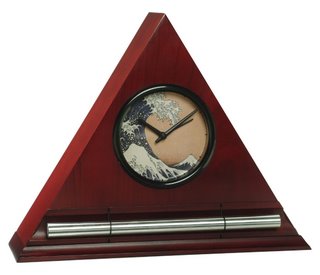 Hokusai Wave Zen Meditation Timer and Alarm Clock Now & Zen – The Meditation Timer Store
1638 Pearl Street
Boulder, CO 80302
(800) 779-6383
Posted in Chime Alarm Clocks, Hokusai Wave, intention, Japanese Inspired Zen Clocks, Meditation Timers, Meditation Tools, mindfulness practice, nature, Walking Meditation, Well-being, Zen Timers
 time your walking meditation with the Digital Zen Timer by Now & Zen, Inc. Ways to Relive Stress:
Get rid of nervous tension by inhaling as you take four steps, then exhaling for four steps. Repeat for at least three minutes (the longer, the better). Work up to six to eight steps per inhale and exhale. Use your Digital Zen Timer on the ‘Repeat Mode’ so that it will chime every three minutes to time yourself.
Now & Zen Headquarter Store
1638 Pearl Street
Boulder, CO 80302
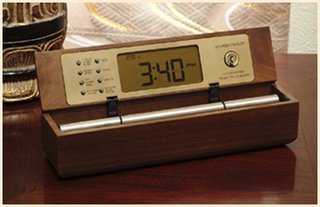 Timers and Alarms with Chimes
Posted in Chime Alarm Clocks, Meditation Timers, Meditation Tools, mindfulness practice, nature, Now & Zen Alarm Clocks, Yoga Timer, Zen Alarm Clock
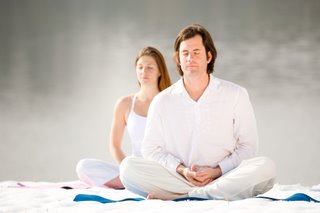 mind-body therapies help your heart Research shows that the stress-inflammation cycle is as detrimental to your heart as a plate full of the cheesiest fettuccine Alfredo. “Stress hormones, such as adrenaline and cortisol, cause the arteries to constrict, which results in a rise in blood pressure and decrease in blood flow,” Moyad explains. Less blood flow means less oxygen circulating through the body to combat free radicals—unstable cells that can damage healthy tissues. “We know now that bad LDL cholesterol only becomes threatening when levels get so high that it binds with free radicals,” Moyad says. When this happens, LDL changes structure and gets absorbed by the arterial walls’ lining, resulting in plaque buildup, or atherosclerosis. Such tissue damage causes the immune system to go into overdrive, triggering inflammation. Reduce your risk with effective mind-body therapies like meditation, yoga, exercise or massage.
The Digital Zen Clock & Meditation Timer serves as a countdown and interval timer for yoga, meditation, bodywork, etc.; and it can also be set to chime on the hour as a tool for “mindfulness.”
adapted from Natural Solutions Magazine, January 2010 by Kate Hanley
 bamboo meditation timer and natural alarm clock with gentle chime Now & Zen’s Clock and Meditation Timer Shop
1638 Pearl Street
Boulder, CO 80302
(800) 779-6383
Posted in Beauty, Chime Alarm Clocks, intention, Japanese Inspired Zen Clocks, Meditation Timers, Meditation Tools, mindfulness practice, Natural Awakening, nature, Well-being, yoga, Yoga Timer, Yoga Timers by Now & Zen, Zen Timers
 Staying Healthy - woodblock print by Toyohara Chikanobu (1838-1912), dated 1896; In the midst of the cold winter months, a burst of sunshine is a welcome sight. When most days are gray, it’s hard to remember that the sun is still there in the sky—it hardly pierces through the gray curtain of clouds that seems to seal in cold air. The apparent absence of sunlight can drive even the most chipper of people into a mental funk.
One reason why the winter months can be so hard is due to the inability of the body to attain and process vitamin D, which is responsible for keeping autoimmune diseases, seasonal affective disorder, poor bone health, and arthritis at bay. The sun is the body’s single most reliable source of vitamin D, and between the months of November and April, there are no ultra-violet B rays available north of Atlanta, Georgia. This causes vitamin D levels to drop drastically.
Vitamin D boosts the immune system, thus explaining why the common cold and influenza make a widespread appearance this time of year. Sunlight is also known to decrease stress and anxiety, not necessarily because of its affect on vitamin D levels, but because of its general mood-boosting properties; serotonin production increases in sunlight.
So how do you make sure you get enough sunlight in winter? Get outside for at least 30 minutes a day even if you’re bundled up like an Arctic explorer. If 30 minutes isn’t an option due to a packed schedule, a light therapy lamp with 10,000 lux simulates daylight and tricks your mind into reaping the mental benefits of sunlight. If you’re feeling fine in your mind but can’t get rid of a cold, Vitamin D can be found in cod liver, fish oil, herring, oysters, salmon, halibut, soymilk, shrimp, milk, fortified cereals, mushrooms, and eggs. Northerners will want to explore a vitamin D supplement.
In the dead of winter, it may be hard to imagine the warm, summery days that will eventually return, but they will. In the meantime, load up on vitamin D, bundle up, and keep moving!
adapted from Natural Solutions Magazine, February 2012
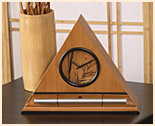 Zen Alarm Clocks and Timers for Yoga and Meditation Now & Zen – The Zen Alarm Clock Store
1638 Pearl St.
Boulder, CO 80302
(800) 779-6383
Posted in Meditation Timers, mindfulness practice, Natural Awakening, nature
 meditating on a rock According to traditional Chinese medicine (TCM), the heart is the emperor of the body—it feeds all systems and rules the mind. The connection between the mind and the heart is more than just metaphysical: In a 2008 study conducted by researchers at the Medical College of Georgia, adolescents who practiced simple breath-awareness meditation for 20 minutes a day—10 minutes in school and 10 minutes at home—for three months experienced significant reductions in blood pressure and resting heart rate. Laurie Steelsmith, ND, a specialist in TCM and author of Natural Choices for Women’s Health (Three Rivers Press, 2005), recommends meditating 20 minutes a day at least four times a week to reap the full benefits of the practice. Or give your heart a mini-vacation by settling in with your favorite soothing CD. Research shows the heart synchronizes its beating to increases and decreases in music tempo. “We often use classical music to help our patients’ heart rate slow to 60 to 70 beats per minute,” says Michelle Cameron, director of healing solutions at the Cleveland Clinic.
The Digital Zen Clock & Chime Timer serves as a countdown and interval timer for yoga, meditation, bodywork, etc.; and it can also be set to chime on the hour as a tool for “mindfulness.”
Digital Zen Clocks feature a “high” and “low” chime strike volume control, which allows you to adjust the sound of the chime to suit your needs. The Digital Zen Clock runs on 2 AA batteries (not included) and can also be plugged in with the included AC jack. The clock includes a lighted digital display (which can be set to be lit full-time when plugged in).
adapted from Natural Solutions Magazine, January 2010 by Kate Hanley
 Natural Chime Meditation Timers in Solid Maple Now & Zen’s Natural Chime Timer Shop
1638 Pearl Street
Boulder, CO 80302
(800) 779-6383
Posted in intention, Meditation Timers, Meditation Tools, mindfulness practice, nature, Well-being, zen, Zen Timers
 Bach's wake up call The theme of spiritual life as a kind of awakening is a metaphor found in every culture and tradition. You might enjoy listening to music by the great German composer Johann Sebastian Bach, who chose the theme of awakening for a cantata he composed in 1731. Inspired by the Gospel of Matthew 25:1–13, it opens with the words, “Wachet auf, ruft uns die Stimme” (Sleepers awake! The Voice calls to us).
Rolf Sovik, PsyD, is the author of Moving Inward: The Journey to Meditation. He is the president of theHimalayan Institute, and serves as the director of the Institute’s branch center in Buffalo, New York.
 Musical Chime Alarm Clock with Real Acoustic Sounds Now & Zen
1638 Pearl St.
Boulder, CO 80302
(800) 779-6383
Posted in mindfulness practice, Natural Awakening, nature, Now & Zen Alarm Clocks
« Previous Entries
Next Page »
|
|
|
|